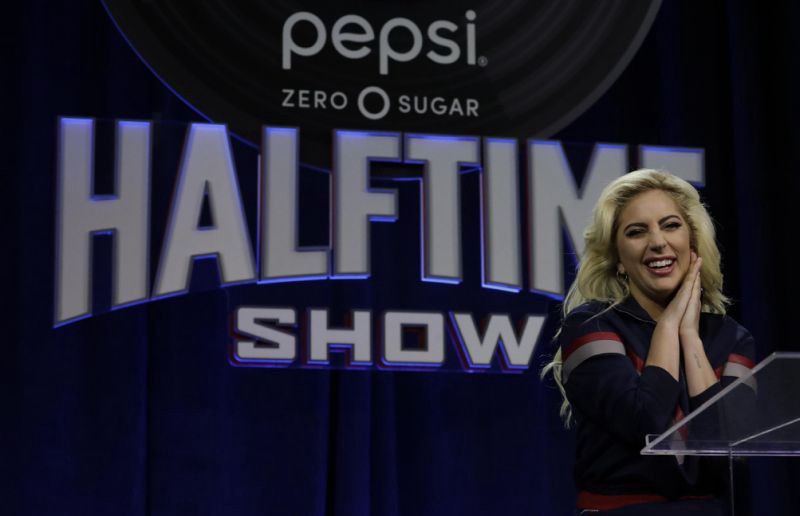By Paulo Camacho

Lady Gaga is slated as the Halftime show performer for Super Bowl LI. The halftime show has come a long way since it’s start with the first ever AFL-NFL Championship Game.
The Super Bowl.
It was an event with humble beginnings: A compromise between the National Football League and the American Football League when the two factions merged in 1970, to be played as their ultimate championship game. In its first incarnations, the AFL-NFL Championship game — not yet referred to as the Super Bowl — wasn’t even a sellout event.
Similarly, the halftime show was light years away from the musical extravaganzas you regularly see on Super Bowl Sunday. At the first Super Bowl in 1967, held at the Los Angeles Coliseum, the halftime festivities consisted of sets from both the University of Arizona Symphonic Marching Band and the Grambling State University Marching Band, accompanied by a local high school drill team. In fact, until Super Bowl V, the halftime show exclusively used area college marching bands, such as Grambling State, Southern, and Florida A&M.
As the Super Bowl, and its halftime show, began to evolve, their host committees began diversifying their acts. From scant appearances by artists like Ella Fitzgerald (Super Bowl VI) and Andy Williams (Super Bowl VII), to their reliance on the education organization Up With People, who began heavy involvement with the halftime show starting in 1976. The organization, which promoted four tenets of “love, honesty, purity, and unselfishness”, appeared in five Super Bowl halftime shows between 1976 and 1986, and helped establish the show format of the times: themed, musical-style shows that aimed to “fill the field” with performers.
Interestingly enough, it was because of the halftime show’s reliance on organizations like UWP that the format wore out its welcome by the late 1980s. So much so, that said shows were viewed as some of the worst in Super Bowl history, for being “too dated”, and not in touch with modern culture. With that in mind, the halftime show had a makeover starting in 1987, with The World of Make Believe — a celebration of Hollywood’s centennial, featuring such stars of the time, such as George Burns, Mickey Rooney, and various Disney characters.
The halftime show stuck to some of its roots until the late 1990s — namely, their insistent use of marching bands, which essentially ended after Super Bowl XXXII, when the Grambling State Marching Band appeared for their sixth and final time in a halftime show, with major acts like Boyz II Men, Smokey Robinson, Queen Latifah and The Temptations. A marching band appeared once more in 2004 at Super Bowl XXXVIII, with acts like Jessica Simpson, P. Diddy and Nelly.
Despite the continued use of marching bands, the halftime show’s use of major recording artists became a regular occurrence starting in the early 1990s. The beginning of such a trend can be attributed to 1993, after the major success that came with booking Michael Jackson for the Super Bowl XXVII halftime show.
Despite the success of Jackson’s halftime show, however, a solo act was rarely booked in the span of halftime shows between 1994 and 2004. The only such occurrences were in 1996 — Diana Ross sang a medley of her hit singles at Super Bowl XXX — and 2002 — U2 were chosen as the lone performers in the event’s first halftime show since the 2001 World Trade Center attacks.
In many instances, the halftime show relied on a star-studded extravaganza of the day’s biggest music stars. From The Blues Brothers, ZZ Top and James Brown at Super Bowl XXXI in 1997, to Aerosmith, Britney Spears, Mary J. Blige and Nelly at Super Bowl XXXV in 2001, the halftime show was about the combination of star power and mainstream production value.
That all changed on February 1, 2004, at the halftime show for Super Bowl XXXVIII. In an unforgettable conclusion to a celebrity-riddled show featuring the likes of Jessica Simpson, P. Diddy and Kid Rock, Justin Timberlake and Janet Jackson ended the set with the incident now infamously known as “NippleGate” — Timberlake ripping off a part of Jackson’s dress to expose a nearly-naked breast. Not only was it known as “the most TiVo’ed moment in television history”, it was also the catalyst for a major format shift in Super Bowl halftime shows.
In response to the media fallout of the previous year, the halftime show reverted back to a “safe” format: a single, world-renowned artist performing a set of their greatest hits. It began with Paul McCartney at Super Bowl XXXIX in 2005, and lasted until Super Bowl XLIV in 2010. It was seen, partly, as a resurgence in Super Bowl halftime shows, as the format gave popular culture what was perhaps the greatest halftime performance in Super Bowl history — the lauded set performed by Prince at Super Bowl XLI in 2007.
While the format of the halftime show has gone back and forth in recent years — from the simple single-performer concert set, to the multi-performer extravaganza — the event has remained just that over the better part of the past three decades — a marquis event, separate from the Big Game, itself. This year features the musical stylings of Lady Gaga, who will more than likely carry the legacy of the spectacle that is the Super Bowl Halftime show.
To think it started with a marching band in Los Angeles, over a half-century ago.